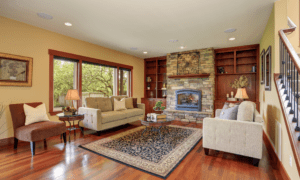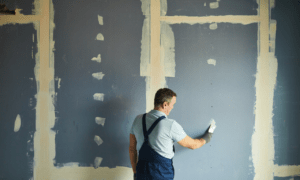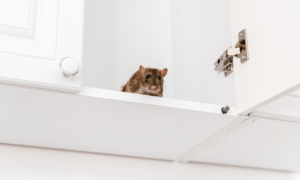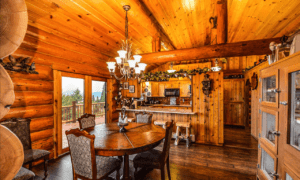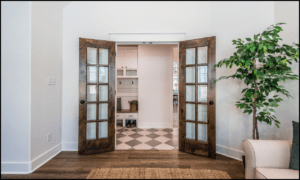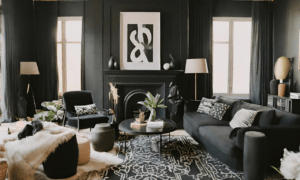Introduction to Interior Home Windows
Exploring the Versatility of Interior Home Windows
Interior home windows have become a design trend that not only adds aesthetic appeal but also serves functional purposes. These windows, often used to divide interior spaces or bring light into areas that lack traditional windows, offer a unique and flexible approach to home design. They can transform your home’s atmosphere and make it feel more spacious and welcoming.
Key Considerations for Incorporating Interior Windows
Before embarking on an interior window project, it’s essential to consider various factors. These include the type of interior window, placement, and style that best suit your home’s design. Additionally, you’ll need to think about how interior windows impact lighting, privacy, and energy efficiency within your living space.

Types and Styles of Interior Home Windows
Interior home windows offer a diverse range of styles, each with its own unique advantages. By understanding the options available, you can make informed decisions about the type of interior window that best suits your home’s design and layout.
An Overview of Different Interior Window Options
- Fixed Windows: Fixed windows are stationary and cannot be opened or closed. They are perfect for introducing natural light into a space while maintaining a clear view. Fixed windows are often used in areas where ventilation is not a primary concern, such as high or hard-to-reach spots. They create a sense of openness and can be tailored to various shapes and sizes.
- Sliding Windows: Sliding interior windows offer versatility and easy operation. They consist of two panels, one of which slides horizontally. This style is an excellent choice for connecting different living spaces while controlling airflow and privacy. Sliding windows can be made from various materials, including wood, vinyl, or aluminum.
- Casement Windows: Casement windows open outward like a door, typically with a crank mechanism. They provide an unobstructed view and excellent ventilation when fully opened. Casement windows can be a beautiful addition to kitchens and living rooms where fresh air and natural light are desired. They are available in different frame materials, allowing you to match them to your interior design.
Matching Window Styles to Your Interior Design
Selecting the right interior window style involves more than just functionality; it’s about seamlessly integrating the window into your overall interior design.
- Frame Material: Consider the material of the window frames. Wood frames add warmth and character, while aluminum frames offer a modern and sleek appearance. Choose the material that complements your existing decor.
- Finishes: Pay attention to the finish of the window frames. Matte finishes provide a more contemporary look, while glossier finishes can add a touch of elegance. Ensure the window finish harmonizes with other elements in your space, like furniture and fixtures.
- Size and Placement: Assess the size of the window and where it will be placed in your interior. Larger windows can create a focal point, while strategically positioned smaller windows can enhance the room’s aesthetics.
- Functionality: Determine how you want the window to function. Do you need it to open for ventilation, or is it primarily for letting in natural light? Understanding the window’s role will help you make an appropriate choice.
By carefully matching window styles to your interior design, you can achieve a cohesive and harmonious look that enhances your living space. Whether you opt for fixed, sliding, casement, or other interior window styles, your choice should contribute to the overall comfort and aesthetics of your home.

Benefits of Interior Home Windows
Natural Light and Ventilation: How Interior Windows Enhance Your Space
Interior home windows are a gateway to a brighter, more inviting living space. By strategically placing them, you can harness the power of natural light to transform even the dimmest corners of your home. The benefits are manifold:
- Brightening Dim Areas: Interior home windows can effectively brighten up previously shadowed or windowless rooms. They capture and distribute natural light, reducing the need for artificial lighting during the day. This not only enhances the ambiance but also saves on energy costs.
- Creating a Comfortable Environment: The influx of natural light makes your living space more comfortable and inviting. It has been shown to improve mood, increase productivity, and reduce eye strain. With well-placed interior windows, your home becomes a sanctuary bathed in soft, natural illumination.
- Enhancing Energy Efficiency: Properly positioned interior windows facilitate cross-ventilation, allowing fresh air to flow through your home. This natural cooling system reduces the need for air conditioning, resulting in energy savings and a reduced environmental footprint.
Privacy and Aesthetic Appeal: The Advantages of Interior Window Installations
Privacy and aesthetics go hand in hand when it comes to interior home windows. Their unique advantages redefine the atmosphere of your living space.
- Privacy Solutions: Interior home windows offer an innovative approach to maintaining privacy while preserving an open and connected feel. You can choose frosted or textured glass, which allows light to pass through while obscuring the view. Additionally, consider using window treatments like blinds or curtains to control visibility as needed.
- Aesthetic Elegance: Interior windows introduce a touch of contemporary elegance to your decor. Their minimalist design complements various interior styles, from modern to traditional. They create visual interest and can serve as a focal point in your design, enhancing the overall aesthetics of your living space.
- Design Flexibility: Interior windows allow you to experiment with creative positioning. Whether you use them as room dividers, kitchen pass-throughs, or transom windows above doorways, they add a unique and artistic dimension to your home’s design.
Interior home windows are more than architectural features; they are transformative elements that brighten, ventilate, provide privacy, and enhance the aesthetics of your living space. Their versatility makes them an excellent choice for homeowners seeking to elevate the quality of their interior environments.

Interior Window Maintenance and Design Tips
Keeping Your Interior Windows in Top Condition
Proper maintenance ensures the longevity and functionality of your interior windows. To keep your interior windows in pristine condition and functioning smoothly, consider the following maintenance tips:
- Regular Cleaning: Dust and grime can accumulate on your interior window surfaces. Use a gentle, non-abrasive cleaner to wipe down the frames and glass regularly. This not only enhances their appearance but also maintains the clarity of the glass.
- Check Seals and Weatherstripping: Inspect the seals and weatherstripping around your interior windows. If you notice any wear or damage, replace them to maintain energy efficiency and prevent drafts.
- Lubricate Moving Parts: If your interior windows have moving parts, such as hinges or sliding mechanisms, apply a lubricant to keep them operating smoothly. This prevents sticking and ensures ease of use.
Innovative Design Ideas for Maximizing the Impact of Interior Home Windows
To make the most of your interior home windows, consider innovative design ideas that can enhance your living space:
- Use Interior Windows as Room Dividers: Interior windows can create a sense of separation while maintaining an open feeling. Consider using interior windows to divide spaces in an artistic and functional way. For example, you can use a glass partition between a home office and a living area, allowing light to flow while maintaining a visual distinction.
- Incorporate Interior Windows into Kitchen Designs: Interior windows can be a stylish addition to your kitchen design. They can provide a view of adjacent rooms, creating a more open and inviting atmosphere. You can also use interior windows to create a pass-through between the kitchen and dining area, making meal service more convenient.
- Enhance Character with Transom Windows: Transom windows placed above interior doors or larger windows can add character to your home. They allow extra light to flow between rooms while creating an architectural focal point. Transom windows are a timeless design feature that can make a significant impact on your home’s aesthetics.
By following these maintenance tips and embracing innovative design ideas, you can ensure that your interior windows not only look their best but also contribute to a more comfortable, stylish, and functional living space.
If you’ve ever wondered about the safety implications of leaving your car running in the garage, check out our article on “What to Do When You Accidentally Leave Your Car Running in the Garage” for essential guidance.





